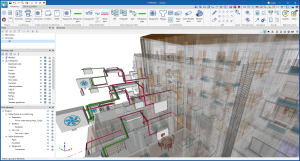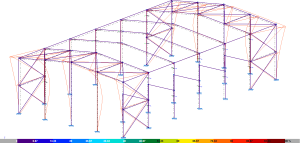CYPE has incorporated the database of the American Society of Heating, Refrigerating and Air-conditioning Engineers (ASHRAE) in its software, which includes the weather and solar data of over 6,600 locations around the word, allowing CYPE users to work with the most important weather database and benefit from the security provided by the certificate of this international society, which is present in over 130 countries.
Specifically, as of the 2014.d version of CYPECAD MEP, users can select any of the 5,564 stations located around the world to import the weather data required for the air conditioning calculations, allowing them to carry out projects and designs at international level in an agile, intuitive manner, with globally certified data.
ASHRAE is a technical international society dedicated to improve the quality of life using technological advances related to heating, ventilation, air conditioning and refrigeration (HVACR). ASHRAE has over 55,000 voluntary members in over 130 countries, making up 165 chapters. The members of the society participate in the development of HVACR technology by creating standards, recommending procedures, providing guides, investigating and publishing technical documents.
Average daily global solar irradiance, using data from NASA
Just as CYPE wishes to provide its users with the most extensive and reliable databases, the “Monthly average daily global solar irradiance on a horizontal surface” values used by CYPECAD MEP to design a solar thermal energy installation for the production of hot sanitary water, have been taken from the “NASA Langley Research Center Atmospheric Science Data Center” database and have been incorporated in the software.
The data that is imported from this database depends on the Latitude and Longitude that are indicated in the “Climatic conditions” dialogue box when user values are introduced. Therefore, highly reliable values can be introduced of the solar irradiance for any place on the planet. Furthermore, the 2013.e version also allows for the adaptation of solar irradiance values of the NASA database when the remaining weather data is imported from the “ASHRAE Weather Data Viewer 4.0” database.





